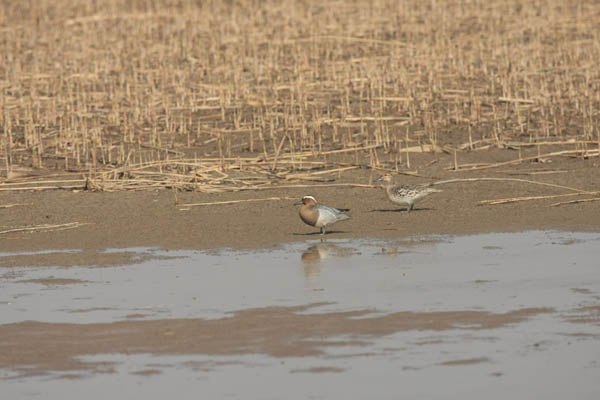Spatula querquedula
IUCN
LCBasic Information
Scientific classification
- name:Spatula querquedula
- Scientific Name:Spatula querquedula,Anas querquedula,Garganey,Ducklings, little stone ducks, brook ducks
- Outline:Waterfowl
- Family:Anseriformes Anatidae Duck
Vital signs
- length:322-410mm
- Weight:255-400g
- lifetime:6-8years
Feature
The eyebrow lines are white, wide and long, extending all the way to the back of the head, and are extremely eye-catching.
Distribution and Habitat
In China, it breeds in the northwest and northeast regions, and is found in central, eastern and southwest China during migration. It winters in low-latitude waters, including Taiwan Island and Hainan Island. Abroad, it breeds in the temperate regions of Eurasia, and winters in central and northern Africa, South Asia, Southeast Asia, and as far south as Indonesia and Australia.
During the non-breeding season, it mostly lives in groups in coastal shallows, fish ponds and lakes. It is also found in freshwater rivers and lakes, often mixed with small river ducks. It is the southernmost river duck that winters in China.In China, it breeds in the northwest and northeast regions, and is found in central, eastern and southwest China during migration. It winters in low-latitude waters, including Taiwan Island and Hainan Island. Abroad, it breeds in the temperate regions of Eurasia, and winters in central and northern Africa, South Asia, Southeast Asia, and as far south as Indonesia and
Appearance
The male is brownish brown from head to chest and upper back, with a broad and long white eyebrow, grayish white flanks, blue-gray patches on wings, and green wings. The female is grayish brown and dull, with white eyebrow and cheek stripes on head, scaly patches on flanks, greenish brown wings, chestnut brown iris, gray-black beak, and blue-gray feet.
Details
White-browed ducks often move in pairs or small groups, and also gather in large groups during migration and wintering. They are timid and alert, often moving and foraging in places covered by water plants. If there is a sound, they will immediately rush out of the water and rise straight up. They fly quickly and are very flexible in takeoff and landing. They are often seen in coastal lagoons. They live on the water during the day and feed at night.

They mainly feed on leaves, stems and seeds of aquatic plants, and also forage for grass on the shore and grains in farmland, especially during the migration season and winter. In spring and summer, they also eat aquatic animals such as mollusks, crustaceans and insects. They forage mostly in shallow water near the water or in small shallow lakes and ponds, and never dive to eat. They forage mostly at night and rest in open water or in water grass during the day.
Every spring, they migrate from the southern wintering grounds to North China from mid-March to early April, and arrive at the northeast and northwest breeding grounds in mid-to-late April. In autumn, they begin to migrate south in late September and early October, and arrive at the southern wintering grounds in succession from mid-October to early November. They often migrate in dense groups.

White-browed ducks are sexually mature at 1 year old. They usually form pairs in winter when they are in their wintering grounds. Adult birds with a breeding history may re-pair, and some may start in September-October and during migration. They often arrive in small groups in pairs to the breeding grounds. The time is usually in late April and early May, which is the latest species to arrive at the breeding grounds among the water ducks. After arriving at the breeding grounds, they immediately start to build their own nesting areas. The breeding season is from May to July. They nest in thick and tall grass near the water or on the ground. The nests are well covered and they also nest under grass bushes 100 meters away from the water. The nests are mostly made of natural pits and caves. Sometimes the female bird slightly repairs and expands them, and puts hay leaves and hay stems inside. After starting to lay eggs, the female bird will also pluck down feathers from her body to surround the nest. When it leaves the nest to find food, it will also cover the eggs with down feathers. Each nest lays 8-12 eggs, occasionally as many as 14 and as few as 6. The eggs are long oval, grass yellow or yellowish brown, 43-49 mm × 29-36 mm in size, 45.7 mm × 33.2 mm on average, and weigh 22-29 grams, 27 grams on average. The female bird incubates the eggs, and the male bird only stays near the nest during the egg-laying period and the first few days when the female bird begins to incubate the eggs. Later, the male bird leaves the female bird and goes to the molting site with other male birds to molt. The incubation period is 21-24 days. The chicks are precocious and can follow the parents soon after hatching. They can fly after more than 40 days under the guidance of the parents.

The white-browed duck is one of China's main industrial birds, with a large population. However, the population is already quite rare. According to the Asian Midwinter Waterbird Survey organized by the International Waterfowl Research Bureau (IWRB), only 2,036 were counted in China in 1990 and 4,434 in 1992. According to a survey in Africa in 1984, the population of white-browed ducks around the world was 548,000 in Chad, 252,000 in Nepal, and 88,000 in Senegal; in Asia, according to a survey in 1992, there were 234 in West Asia, 112,007 in South Asia, 4,434 in East Asia, and 71,140 in Southeast Asia (IWRB 1992). The total population is still very abundant.








